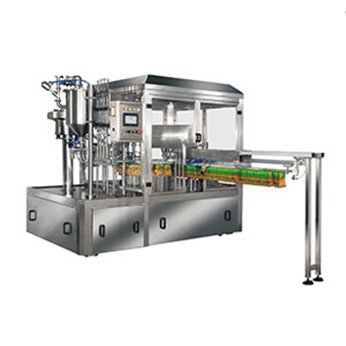I. Introduction: Diverse Demands in the Hookah Market
Hey, did you know? The global trend in hookah consumption is pretty interesting. In traditional Middle Eastern markets, hookah is like a part of daily life, just as natural as us having tea every day. People gather around a hookah, chatting and enjoying themselves—it’s such a cozy atmosphere. But in emerging markets like Europe and America, hookah has become a novel, trendy social activity. Many young people think smoking hookah is cool and a way to show their unique taste, so it’s getting more and more popular there too.
This brings challenges for manufacturers. First, you need to make your products stand out from competitors (product differentiation). Second, you have to boost production efficiency. And third, you must meet compliance requirements for packaging. So, how to tackle these? Let’s keep reading.
II. Main Types of Hookah and Their Manufacturing Features
Traditional Hookah (Shisha/Hookah)
Traditional hookah is like the “elder statesman” of the hookah world. Its materials are usually quite exquisite: the base is often made of glass or metal. Glass bases let you clearly see the water filtering process, which is fascinating; metal ones are more durable and have a premium feel. The hose might be made of bamboo, giving a natural vibe, or brass and other metals for a classy look.
Why do consumers love it? Well, imagine a group of friends sitting around, taking turns with the same hose—it’s super social, bringing people closer. Plus, there are tons of flavors: fruity, floral, you name it, so there’s something for everyone. Chatting while enjoying the unique smoke and aroma? It’s the perfect way to unwind.
Portable/Mini Hookah
As the name suggests, portable or mini hookahs are all about being easy to carry. Their components and materials are similar to traditional hookahs but more streamlined. The base might be lightweight plastic, though some high-end ones use light metal—striking a balance between durability and portability.
Why are they popular? Simple: convenience. With today’s fast-paced life, sometimes you want a hookah while outdoors, traveling, or at a party. Traditional hookahs are too big and bulky, but mini ones fit in your pocket or a small bag. They’re also easy to use, so even beginners can get the hang of them quickly—enjoy hookah anytime, anywhere.
Electronic Hookah (E-Hookah)
E-hookah is like the “new kid on the block” in the hookah family. Its materials and ingredients are quite different from traditional ones. The outer shell is usually plastic or metal alloy, and inside, the key parts are a battery, heating element, and cartridge. The cartridge contains e-liquid (with or without nicotine), and there’s a huge variety of flavors.
Consumers love e-hookahs first because they’re more eco-friendly—no smoke or ash from burning charcoal like traditional hookahs. They’re also easier to use: no need to prepare charcoal; just press a button and you’re good to go. Compared to traditional hookahs, e-hookahs have no open flame, so they’re safer, and they don’t produce that harsh burning smell, making them less annoying for people around you. The downside? They lack the cozy, communal vibe of gathering around a charcoal-heated traditional hookah.
Hookah Charcoal
Hookah charcoal is a must-have for traditional hookahs. It’s usually made from natural materials like coconut shells or bamboo, processed specially. Why do people prefer it? Because it burns steadily, providing consistent heat to fully warm the hookah tobacco, releasing a rich aroma. Plus, it produces little smoke, so it doesn’t interfere with the hookah’s flavor.
Beyond the common types, there are niche hookahs too. For example, herbal hookahs use special herbs instead of tobacco—great for those who want the hookah experience without nicotine. There are also regional specialty hookahs with unique craftsmanship and flavors, adding more diversity to the market.
III. Packaging Equipment
Matching by Product Type
Different hookah types need different packaging machines. Take traditional hookah: it has many parts—base, hose, charcoal, etc.—so you might need a machine that can do combo packaging. For example, a machine that places each part in a custom box and seals it automatically. This protects all components during shipping and makes it easy for consumers to see everything when they open the box.
Portable/mini hookahs are small and light, so a small automated packaging machine works better. It can quickly put individual mini hookahs into plastic bags or small cartons, then seal them—super efficient, perfect for mass production.
Packaging e-hookahs is trickier. They have batteries and other electronic parts, which need special packaging. First, you need anti-static materials to protect the electronics from static damage. The hard part is balancing product protection with good looks and convenience. When choosing a machine, go for one that controls packaging size precisely, arranges the e-hookah pen, cartridges, and charger neatly, and protects the battery. For example, machines with custom molds can hold each part in place based on the e-hookah’s shape and size, then package them as a whole.
Other Considerations: Compliance and Efficiency
No matter what hookah you’re packaging, compliance and efficiency matter. Packaging regulations vary a lot by country/region. Some places require clear health warnings on packaging, with specific rules for font size and color; others have eco-friendly requirements for materials. So, make sure you study these rules first, then pick materials and machines that meet them.
For efficiency, modular machines are a great choice—like aluminum-plastic blister packaging machines that meet GMP standards. Modular design means you can combine or adjust parts as needed. If orders spike, add modules to speed up packaging; if packaging requirements change, swap out modules easily. It keeps production efficient and flexible—pretty great, right?





